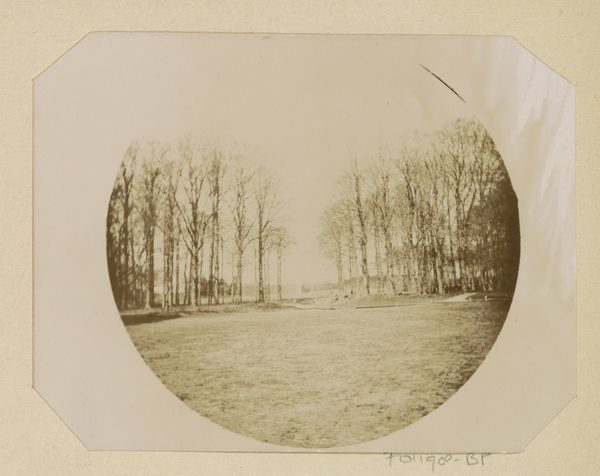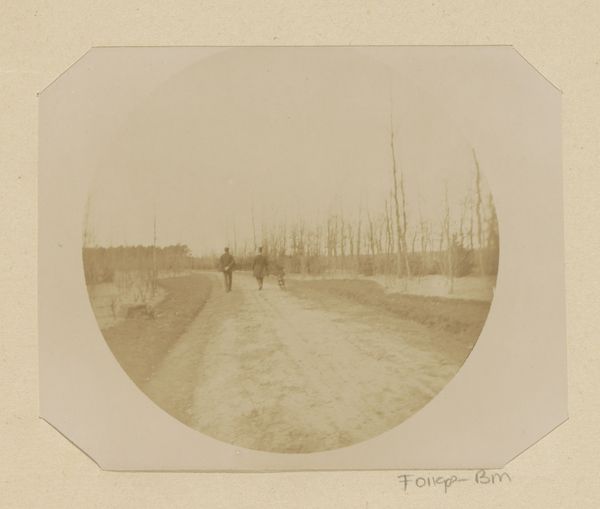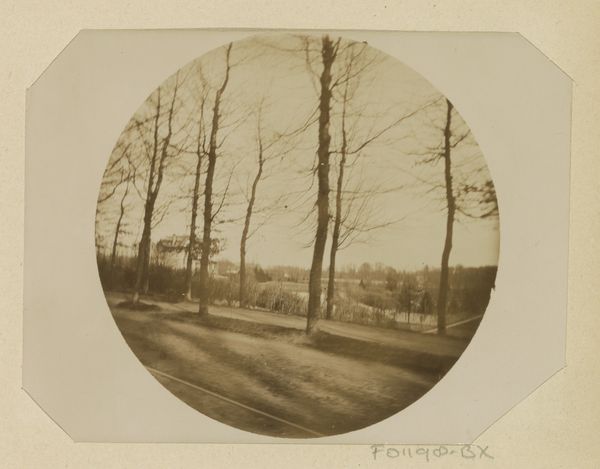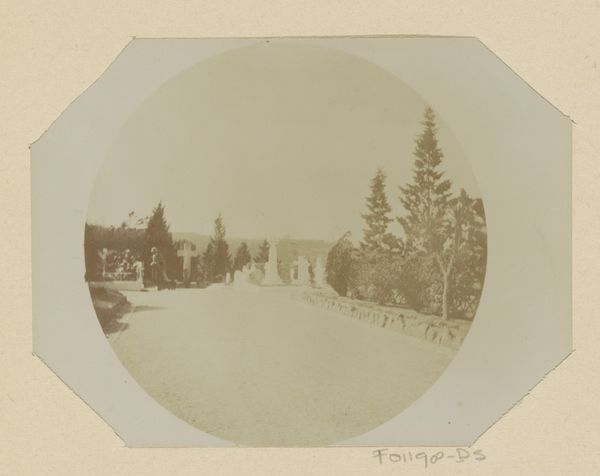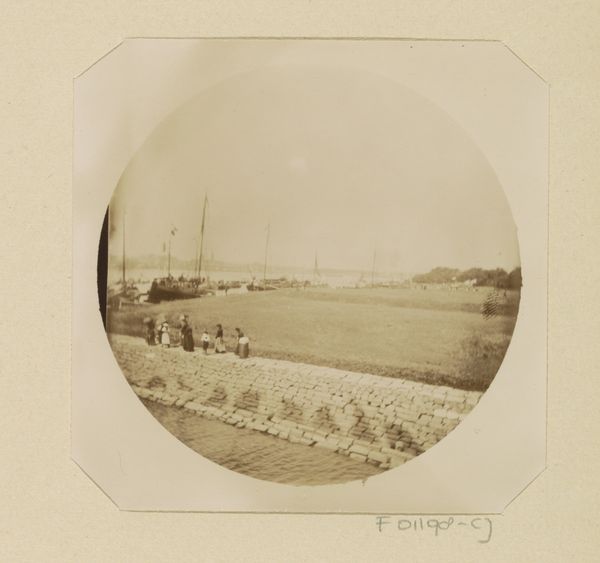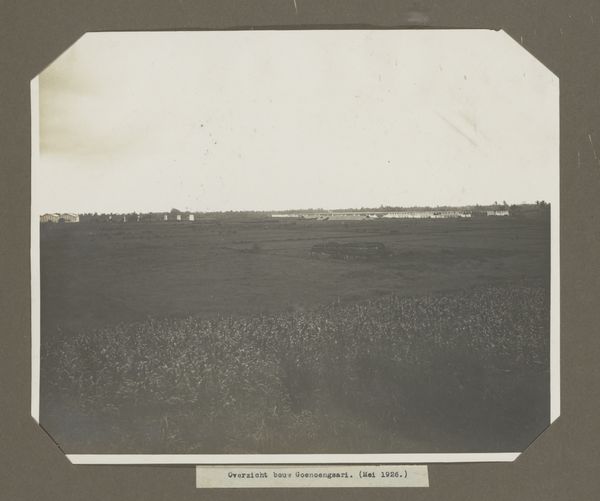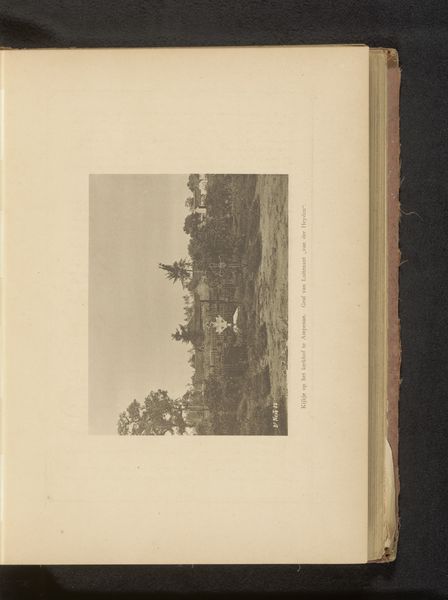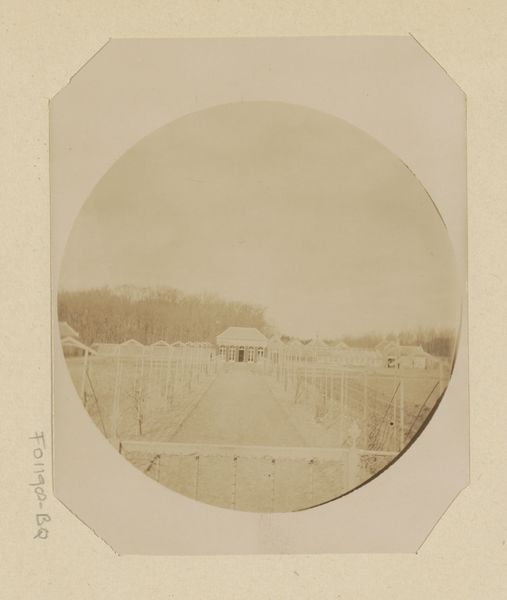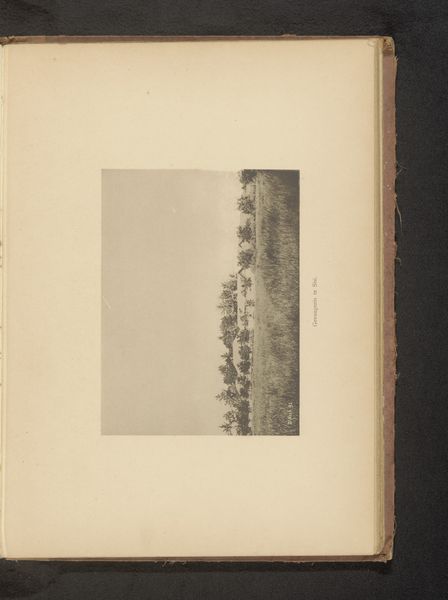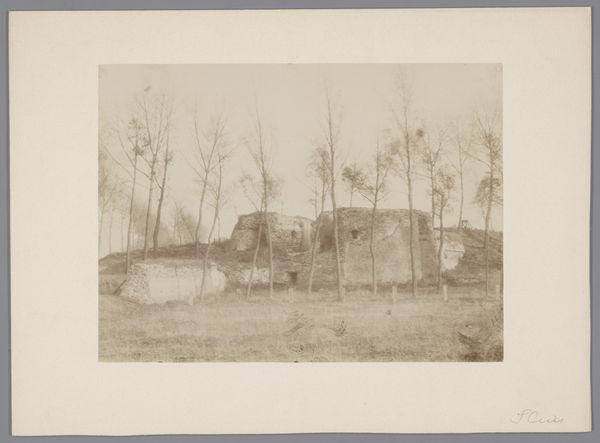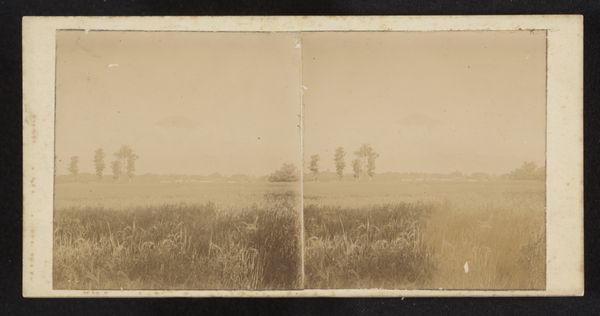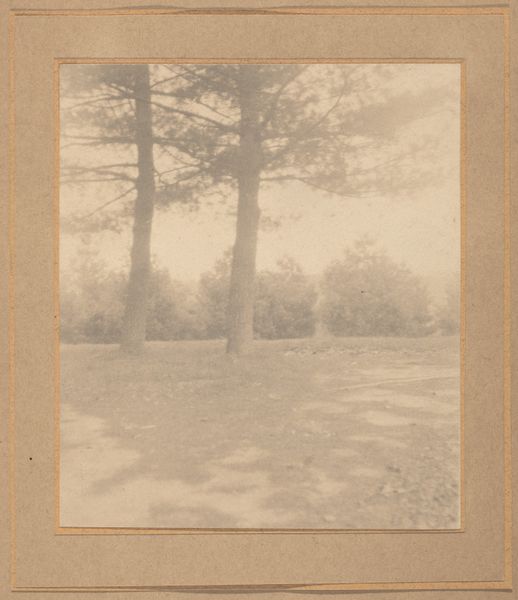
Dimensions: height 90 mm, width 120 mm
Copyright: Rijks Museum: Open Domain
Curator: Here we have Johanna Margaretha Piek's "Gezicht vanuit een geploegde akker nabij Arnhem," a gelatin silver print created sometime between 1889 and 1893. Editor: Immediately, I’m struck by the delicate tonal range, it feels quiet, almost monochromatic. The oval format focuses my gaze. What I perceive is a constructed pictorial space: the dark furrows giving way to what seems to be a structure running through the landscape, bisecting it at nearly the horizontal center line. It feels carefully considered, like a stage set or backdrop, which could well be read as an objective study on the intervention between land and agriculture. Curator: Indeed. The photograph reveals much about the modernization of Dutch agriculture during that period. There's this directness – an almost utilitarian gaze that reveals a particular social interest in landscape at a turning point in the period when ideas around industry, land use, and even social relations, are being intensely questioned, debated, reformed… you have to wonder about her influences from plein-air impressionism as she captured her shots in person, outdoors. Editor: Observe how the placement of the farm building to the left introduces a geometric interplay that feels intentionally structured against the field’s curves. And those furrows—each carefully placed, guiding our eye. It's not merely documentary; it's a composition that subtly elevates the mundane to an almost sublime encounter with the land itself, while holding the entire narrative together. I read that as highly stylized and symbolic in nature. It makes a direct connection with land use and the period's interventionist view of it all, using basic lines, shapes, structures, tonal graduations, textures and balance. Curator: Absolutely. The photographic lens allows Piek to explore the intersection of human activity and the natural world—a testament to the changing cultural perceptions of the rural landscape as the backdrop for the modern experience. Editor: A successful exploration of materiality through a new perspective and methodology of visual composition; it reveals both its formal components and those relevant conceptual, historical layers of analysis, together adding depth and richness for the informed viewer.
Comments
No comments
Be the first to comment and join the conversation on the ultimate creative platform.
